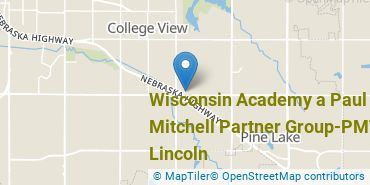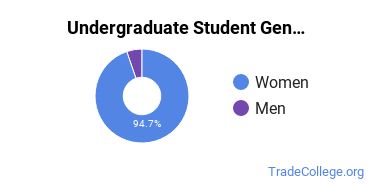Wisconsin Academy a Paul Mitchell Partner Group-PMTS Lincoln Trade Programs
Wisconsin Academy a Paul Mitchell Partner Group-PMTS Lincoln is a private for-profit institution located in Lincoln, Nebraska. The location of Wisconsin Academy is great for students who prefer living in an urban area.
Featured schools near , edit
Where Is Wisconsin Academy a Paul Mitchell Partner Group-PMTS Lincoln?

Contact details for Wisconsin Academy are given below.
| Contact Details | |
|---|---|
| Address: | 5601 South 59Th Street Suite D, Lincoln, NE 68516-2306 |
| Phone: | 402-261-5322 |
| Website: | www.entouragebeautyne.com |
Can I Afford Wisconsin Academy?
Student Loan Debt
While almost two-thirds of students nationwide take out loans to pay for college, the percentage may be quite different for the school you plan on attending. At Wisconsin Academy, approximately 75% of students took out student loans averaging $10,035 a year. That adds up to $40,140 over four years for those students.
Wisconsin Academy a Paul Mitchell Partner Group-PMTS Lincoln Undergraduate Student Diversity
Gender Diversity
Of the 38 full-time undergraduates at Wisconsin Academy, 5% are male and 95% are female.

Racial-Ethnic Diversity
The racial-ethnic breakdown of Wisconsin Academy a Paul Mitchell Partner Group-PMTS Lincoln students is as follows.

| Race/Ethnicity | Number of Grads |
|---|---|
| Asian | 0 |
| Black or African American | 4 |
| Hispanic or Latino | 5 |
| White | 28 |
| International Students | 0 |
| Other Races/Ethnicities | 1 |
Wisconsin Academy a Paul Mitchell Partner Group-PMTS Lincoln Trade School Concentrations
The table below shows the number of awards for each concentration.
| Major | Undergraduate Certificate | TOTAL |
|---|---|---|
| General Cosmetology/Cosmetologist | 13 | 13 |
| TOTAL | 13 | 13 |
References
*The racial-ethnic minorities count is calculated by taking the total number of students and subtracting white students, international students, and students whose race/ethnicity was unknown. This number is then divided by the total number of students at the school to obtain the racial-ethnic minorities percentage.
More about our data sources and methodologies.
Featured Schools
 Request Info
Request Info
|
Southern New Hampshire University You have goals. Southern New Hampshire University can help you get there. Whether you need a bachelor's degree to get into a career or want a master's degree to move up in your current career, SNHU has an online program for you. Find your degree from over 200 online programs. Learn More > |
